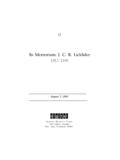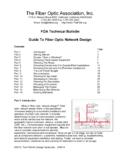Transcription of Labels to Street Scene Labels to Facade BW to Color …
1 Image-to-Image Translation with Conditional Adversarial NetworksPhillip IsolaJun-Yan ZhuTinghui ZhouAlexei A. EfrosBerkeley AI Research (BAIR) Laboratory, UC to FacadeBW to ColorAerial to MapLabels to Street SceneEdges to Photoinputoutputinputinputinputinputoutp utoutputoutputoutputinputoutputDay to NightFigure 1: Many problems in image processing, graphics, and vision involve translating an input image into a corresponding output problems are often treated with application-specific algorithms, even though the setting is always the same: map pixels to adversarial nets are a general-purpose solution that appears to work well on a wide variety of these problems. Here we showresults of the method on several.
2 In each case we use the same architecture and objective, and simply train on different investigate conditional adversarial networks as ageneral-purpose solution to image-to-image translationproblems. These networks not only learn the mapping frominput image to output image, but also learn a loss func-tion to train this mapping. This makes it possible to applythe same generic approach to problems that traditionallywould require very different loss formulations. We demon-strate that this approach is effective at synthesizing photosfrom label maps, reconstructing objects from edge maps,and colorizing images, among other tasks. Indeed, since therelease of thepix2pixsoftware associated with this pa-per, a large number of internet users (many of them artists)have posted their own experiments with our system, furtherdemonstrating its wide applicability and ease of adoptionwithout the need for parameter tweaking.
3 As a commu-nity, we no longer hand-engineer our mapping functions,and this work suggests we can achieve reasonable resultswithout hand-engineering our loss functions IntroductionMany problems in image processing, computer graphics,and computer vision can be posed as translating an inputimage into a corresponding output image. Just as a conceptmay be expressed in either English or French, a Scene maybe rendered as an RGB image, a gradient field, an edge map,a semantic label map, etc. In analogy to automatic languagetranslation, we define automaticimage-to-image translationas the task of translating one possible representation of ascene into another, given sufficient training data (see Figure1). Traditionally, each of these tasks has been tackled withseparate, special-purpose machinery ( , [16, 25, 20, 9,11, 53, 33, 39, 18, 58, 62]), despite the fact that the settingis always the same: predict pixels from pixels.
4 Our goal inthis paper is to develop a common framework for all community has already taken significant steps in thisdirection, with convolutional neural nets (CNNs) becomingthe common workhorse behind a wide variety of image pre-diction problems. CNNs learn to minimize a loss function an objective that scores the quality of results and althoughthe learning process is automatic, a lot of manual effort still1 [ ] 26 Nov 2018goes into designing effective losses. In other words, we stillhave to tell the CNN what we wish it to minimize. But, justlike King Midas, we must be careful what we wish for! Ifwe take a naive approach and ask the CNN to minimize theEuclidean distance between predicted and ground truth pix-els, it will tend to produce blurry results [43, 62].
5 This isbecause Euclidean distance is minimized by averaging allplausible outputs, which causes blurring. Coming up withloss functions that force the CNN to do what we really want , output sharp, realistic images is an open problemand generally requires expert would be highly desirable if we could instead specifyonly a high-level goal, like make the output indistinguish-able from reality , and then automatically learn a loss func-tion appropriate for satisfying this goal. Fortunately, this isexactly what is done by the recently proposed GenerativeAdversarial Networks (GANs) [24, 13, 44, 52, 63]. GANslearn a loss that tries to classify if the output image is realor fake, while simultaneously training a generative modelto minimize this loss.
6 Blurry images will not be toleratedsince they look obviously fake. Because GANs learn a lossthat adapts to the data, they can be applied to a multitude oftasks that traditionally would require very different kinds ofloss this paper, we explore GANs in the conditional set-ting. Just as GANs learn a generative model of data, condi-tional GANs (cGANs) learn a conditional generative model[24]. This makes cGANs suitable for image-to-image trans-lation tasks, where we condition on an input image and gen-erate a corresponding output have been vigorously studied in the last twoyears and many of the techniques we explore in this pa-per have been previously , ear-lier papers have focused on specific applications, andit has remained unclear how effective image-conditionalGANs can be as a general-purpose solution for image-to-image translation.
7 Our primary contribution is to demon-strate that on a wide variety of problems, conditionalGANs produce reasonable second contri-bution is to present a simple framework sufficient toachieve good results, and to analyze the effects of sev-eral important architectural choices. Code is available Related workStructured losses for image modelingImage-to-imagetranslation problems are often formulated as per-pixel clas-sification or regression ( , [39, 58, 28, 35, 62]). Theseformulations treat the output space as unstructured in thesense that each output pixel is considered conditionally in-dependent from all others given the input image. Condi-tional GANs instead learn astructured loss.
8 Structuredlosses penalize the joint configuration of the output. AfakeG(x)xDrealDGxyxFigure 2: Training a conditional GAN to map edges photo. Thediscriminator,D, learns to classify between fake (synthesized bythe generator) and real{edge, photo}tuples. The generator,G,learns to fool the discriminator. Unlike an unconditional GAN,both the generator and discriminator observe the input edge body of literature has considered losses of this kind,with methods including conditional random fields [10], theSSIM metric [56], feature matching [15], nonparametriclosses [37], the convolutional pseudo-prior [57], and lossesbased on matching covariance statistics [30]. The condi-tional GAN is different in that the loss is learned, and can, intheory, penalize any possible structure that differs betweenoutput and GANsWe are not the first to apply GANsin the conditional setting.
9 Prior and concurrent works haveconditioned GANs on discrete Labels [41, 23, 13], text [46],and, indeed, images. The image-conditional models havetackled image prediction from a normal map [55], futureframe prediction [40], product photo generation [59], andimage generation from sparse annotations [31, 48] ( [47]for an autoregressive approach to the same problem). Sev-eral other papers have also used GANs for image-to-imagemappings, but only applied the GAN unconditionally, re-lying on other terms (such as L2 regression) to force theoutput to be conditioned on the input. These papers haveachieved impressive results on inpainting [43], future stateprediction [64], image manipulation guided by user con-straints [65], style transfer [38], and superresolution [36].
10 Each of the methods was tailored for a specific applica-tion. Our framework differs in that nothing is application-specific. This makes our setup considerably simpler thanmost method also differs from the prior works in severalarchitectural choices for the generator and past work, for our generator we use a U-Net -basedarchitecture [50], and for our discriminator we use a convo-lutional PatchGAN classifier, which only penalizes struc-ture at the scale of image patches. A similar PatchGAN ar-chitecture was previously proposed in [38] to capture localstyle statistics. Here we show that this approach is effectiveon a wider range of problems, and we investigate the effectof changing the patch MethodGANs are generative models that learn a mapping fromrandom noise vectorzto output imagey,G:z y[24].


![arXiv:0706.3639v1 [cs.AI] 25 Jun 2007](/cache/preview/4/1/3/9/3/1/4/b/thumb-4139314b93ef86b7b4c2d05ebcc88e46.jpg)

![arXiv:1301.3781v3 [cs.CL] 7 Sep 2013](/cache/preview/4/d/5/0/4/3/4/0/thumb-4d504340120163c0bdf3f4678d8d217f.jpg)
![@google.com arXiv:1609.03499v2 [cs.SD] 19 Sep 2016](/cache/preview/c/3/4/9/4/6/9/b/thumb-c349469b499107d21e221f2ac908f8b2.jpg)




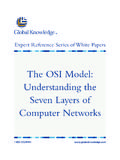
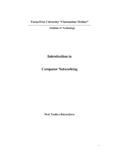
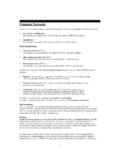
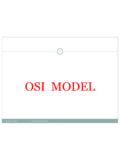
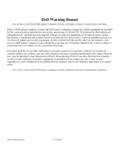
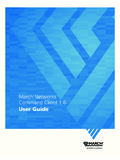
![ABSTRACT arXiv:1409.1556v6 [cs.CV] 10 Apr 2015](/cache/preview/4/e/0/e/4/4/2/c/thumb-4e0e442c20fc4f8e108fa20a1095af07.jpg)
